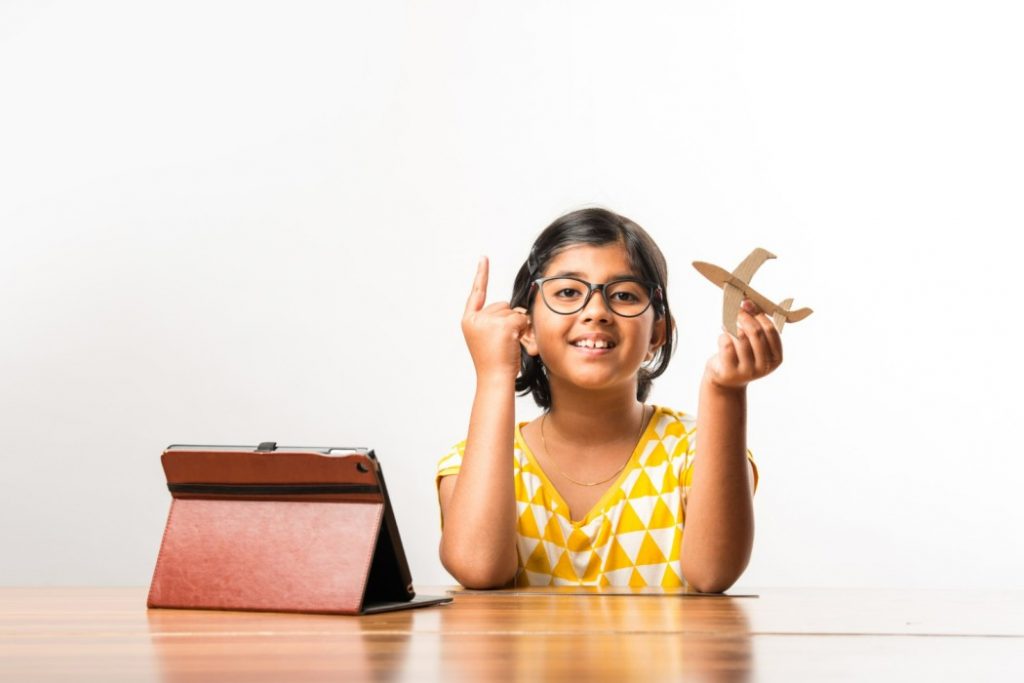Do you have an aspiring scientist living in your home? You’re likely looking for ways to cultivate their enthusiasm for science. Even simple science experiments conducted at home can be incredibly educational and entertaining for children of all ages. We scoured the literature and conducted these experiments with our own young children to ensure that they were effective. Each of these simple science experiments will take approximately 30 minutes to complete from start to finish, and require only common household items.
Homemade Lava Lamp
This simple experiment is a hit with children ages 4 to 12 (and beyond! ), and it will also transport their favourite adults back several decades! This simple science activity instructs children about density.
Ingredients Required:
- A clean plastic bottle
- Food Colouring
- Vegetable Oil
- Water
- Fizzing tablets

Fill the bottle about a quarter full with water. Pour nearly all of the vegetable oil into the bottle. Utilise a funnel if you possess one. Observe for a few moments as the oil and water separate. Then, add several drops of your preferred food colouring. Observe the colour as it permeates the oil. The next step is to split the tablet in half and place half of it in the bottle. Observe as bubble blobs form. Lastly, if you have a flashlight, turn off the lights and place another half tablet into the container. Shine the flashlight through the bubbling blobs of the lava lamp.
Since oil is less dense than water, it floats on the surface of the water. Because the food colouring has the same density as water, it sinks through the oil and combines with the water. As the tablet dissolves, carbon dioxide gas is produced. Because gas is lighter than water, it rises to the surface, bringing food colouring with it. When the air is released from the blob of coloured water, the water becomes heavy and sinks.

Magical Light Refraction
This incredibly simple science experiment, which is more of a magic trick, will teach your children all about light refraction.
Ingredients Required:
- Glass Jar
- Water
- Pieces of Paper
- Marker
Draw two large arrows on a sheet of paper, one near the top and one near the bottom. Orientate the arrow in the same direction. Fill a glass with water next. Slowly place the sheet of paper behind the water glass. Be amazed as you observe the water through the water glass.
When light travels from one medium to another, such as air to water or water to air, refraction occurs. In this experiment, before the light reaches our eyes, it travels from the paper through the air, then through the glass and into the water, and finally back into the air. Light travels the quickest through air, a little slower through water, and the SLOWEST through glass. This means that the light bends when it travels through the glass cup and into the water, and again when it exits the glass cup and into the air.
Mini Volcanos
This super simple baking soda and vinegar volcano eruption is a hit with children of all ages, and your children will beg to do it again and again! Your colourful volcano will erupt in a matter of minutes with just a few very basic household ingredients. It takes approximately three minutes to prepare. If you wish for this to be a mess-free science experiment, you should conduct it outside on dirt or rocks.
Ingredients Required:
- Plastic cup
- Water
- Food colouring (or washable paint if you want to avoid staining)
- One cup of Vinegar
- 3-4 Tbsp of baking soda at least
- 1 tsp of dish soap
First, combine your base ingredients by pouring water into the plastic cup until it is approximately two-thirds full. Then, add baking soda, dish soap, food colouring, or washable paint. Using washable paint as opposed to food colouring will prevent stains. Mix the ingredients thoroughly. Then, add vinegar until it begins to foam and pour out of the cup. As necessary, repeat with additional colours. Your children will definitely want more. The erupting “lava” bubbles are filled with carbon dioxide. The carbon dioxide gas results from the reaction of an acid (vinegar) and a base (baking soda).
Which of the science experiments and activities that we’ve posted is your favourite? Have you tried any that you particularly enjoyed with your child? We’re eager to listen. For more such exciting and educational blogs, do follow ODM Global School – the Best CBSE School in Bhubaneswar.
